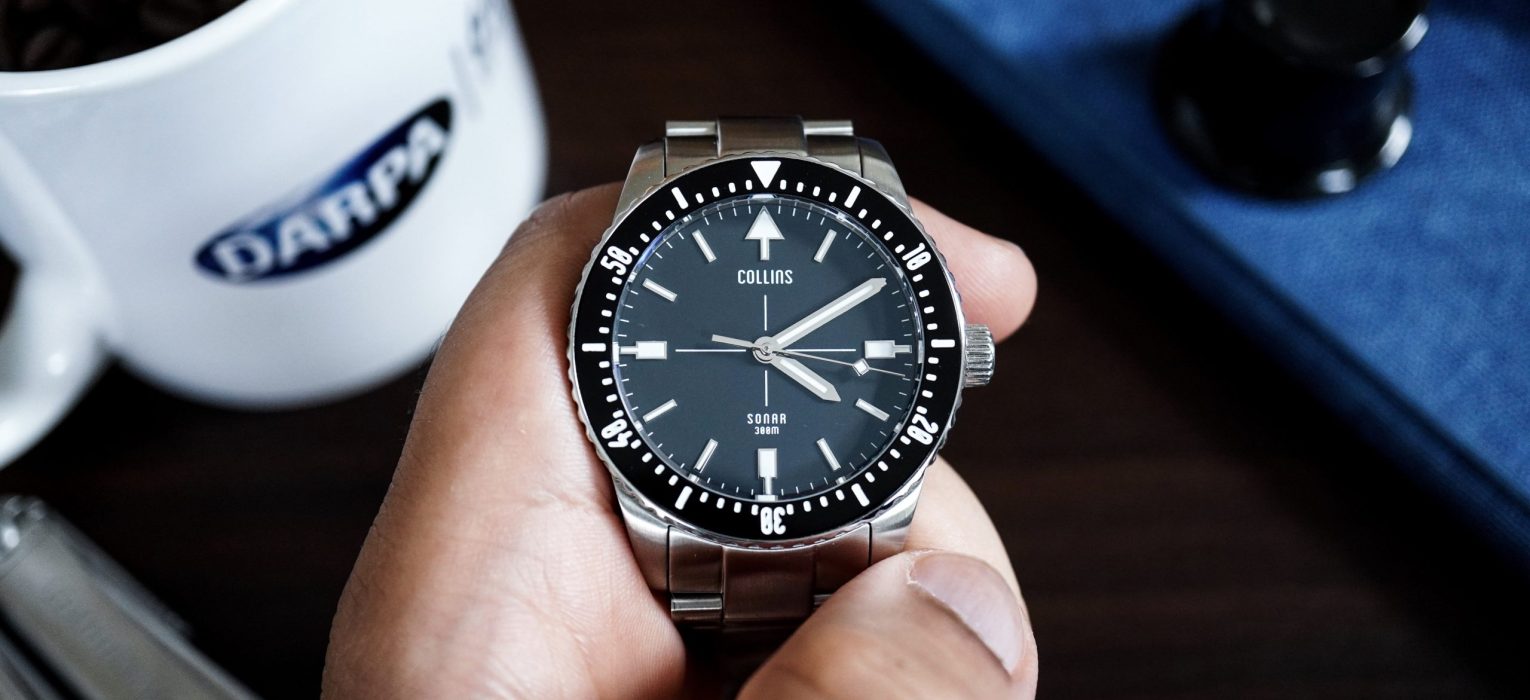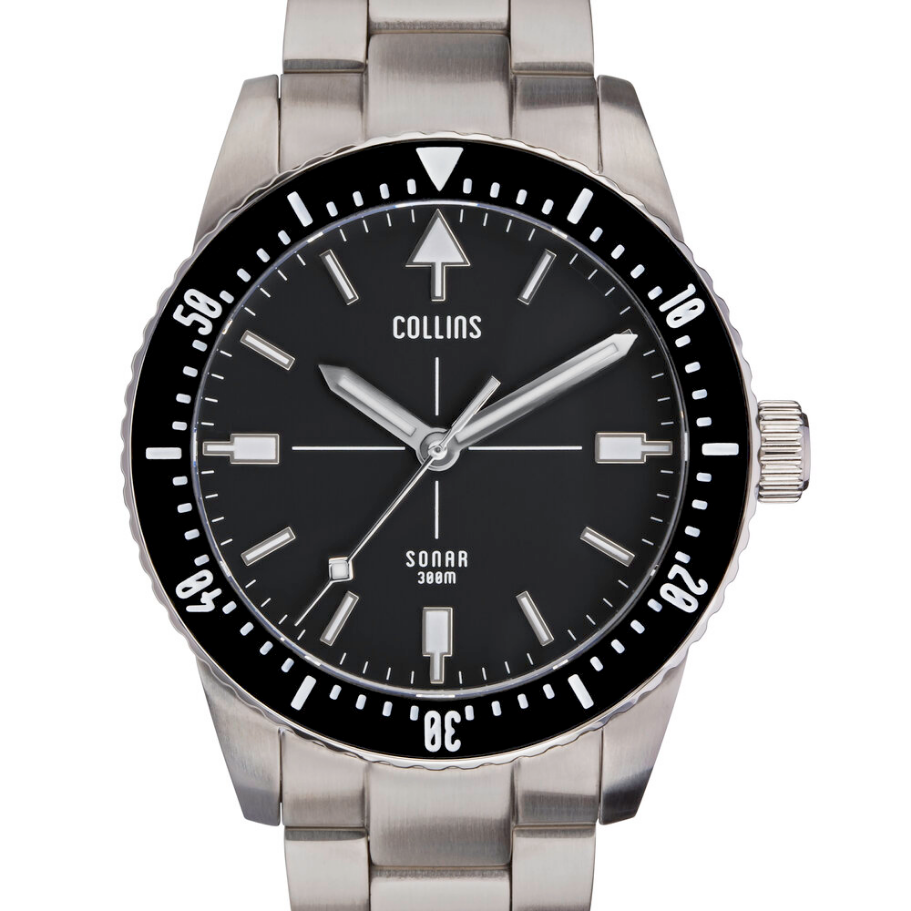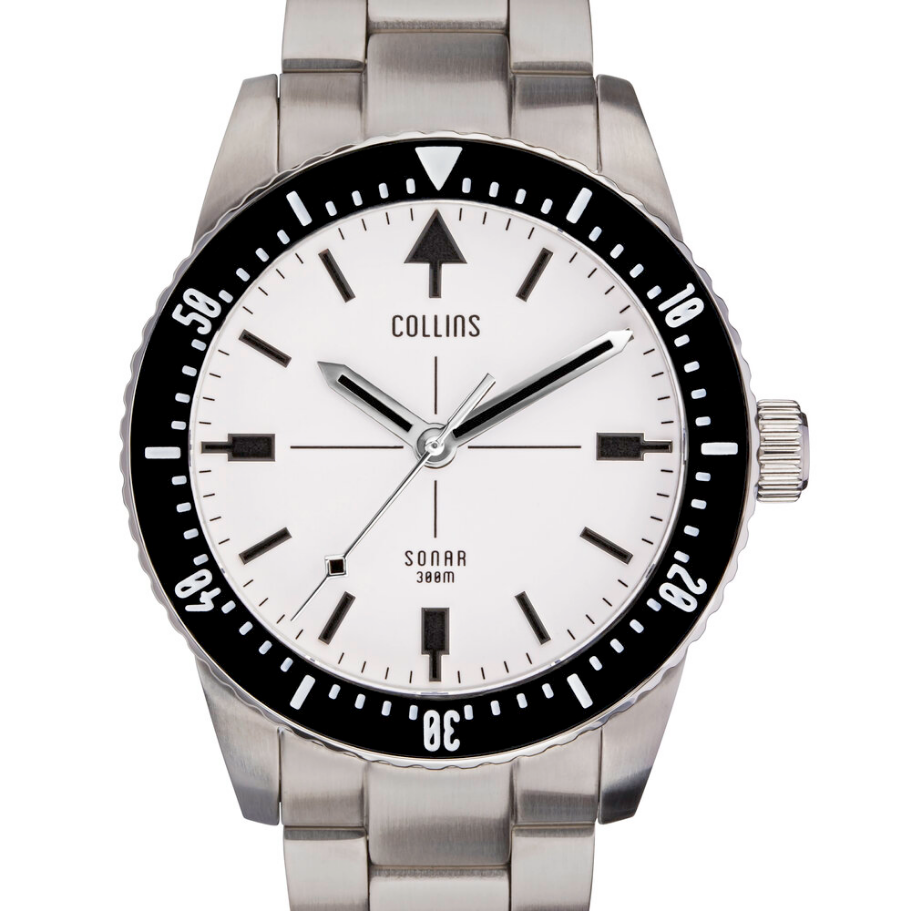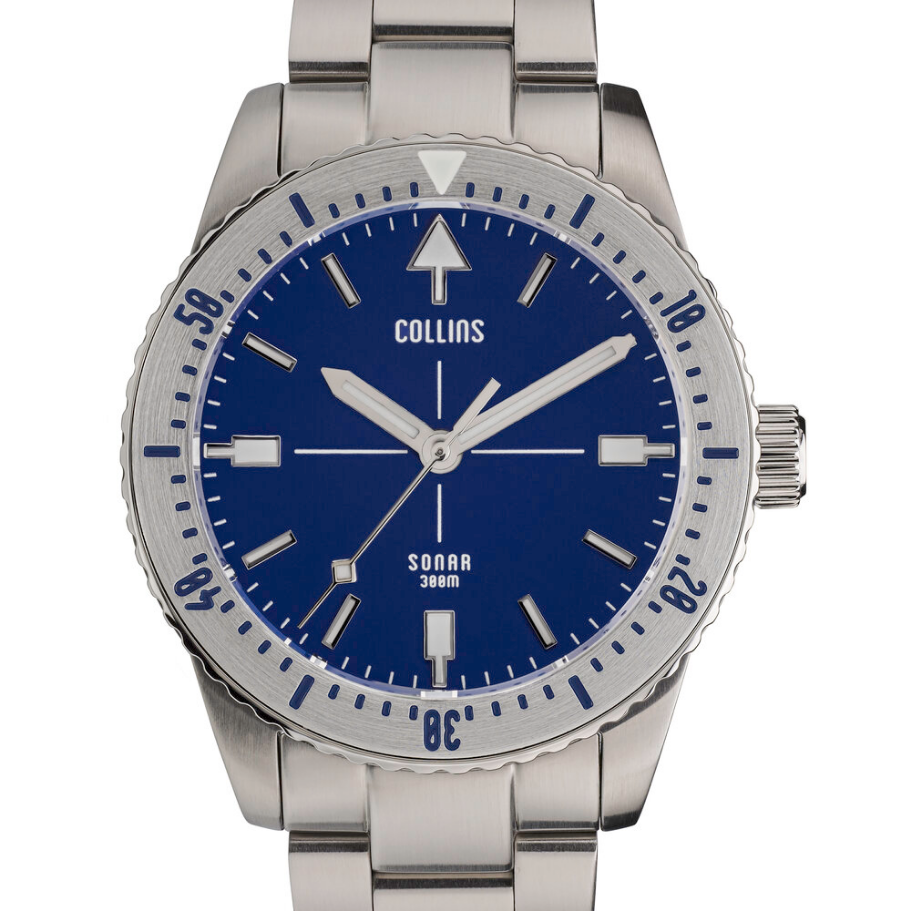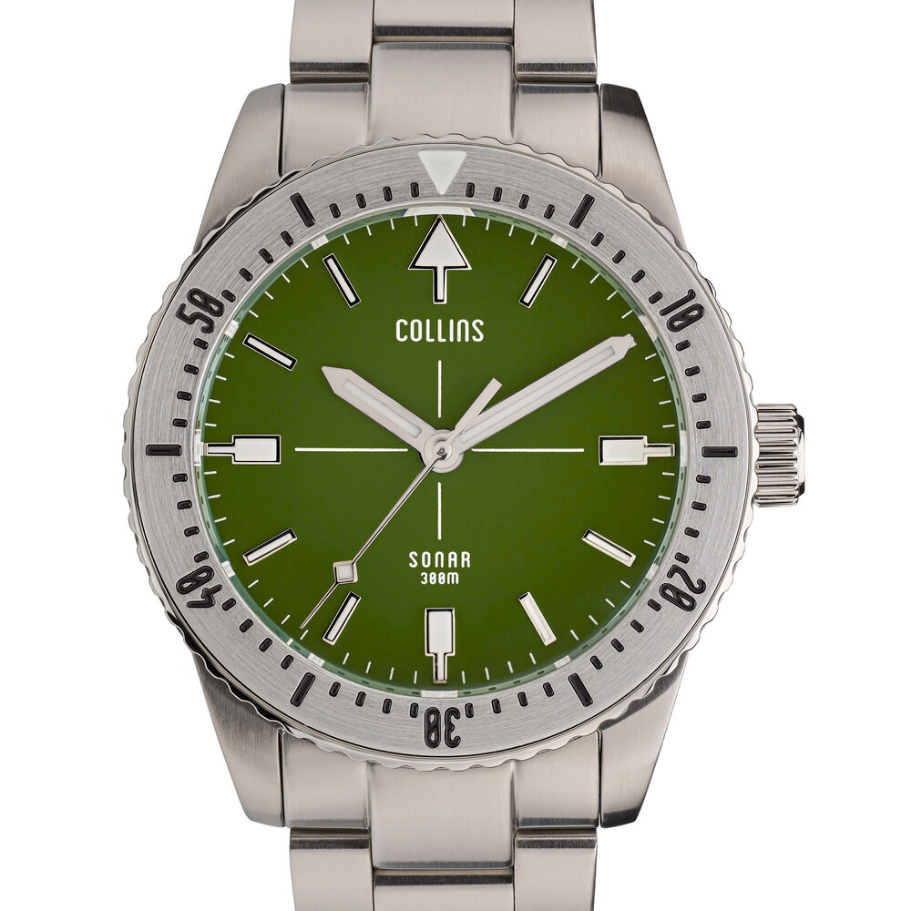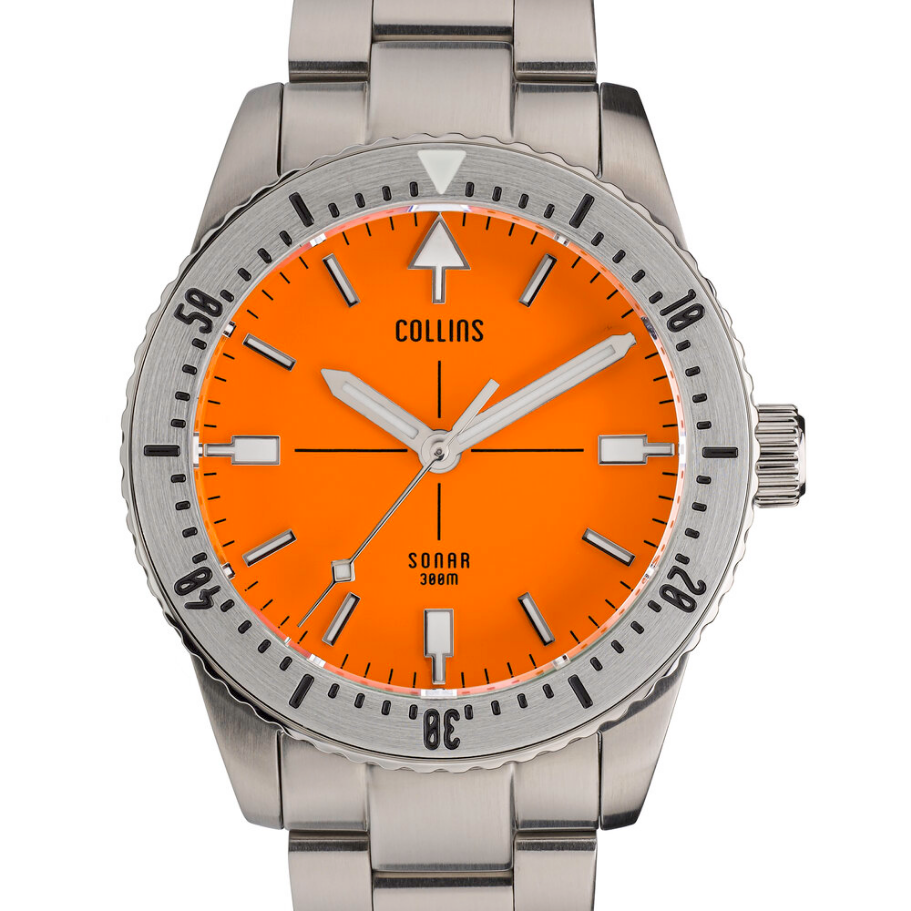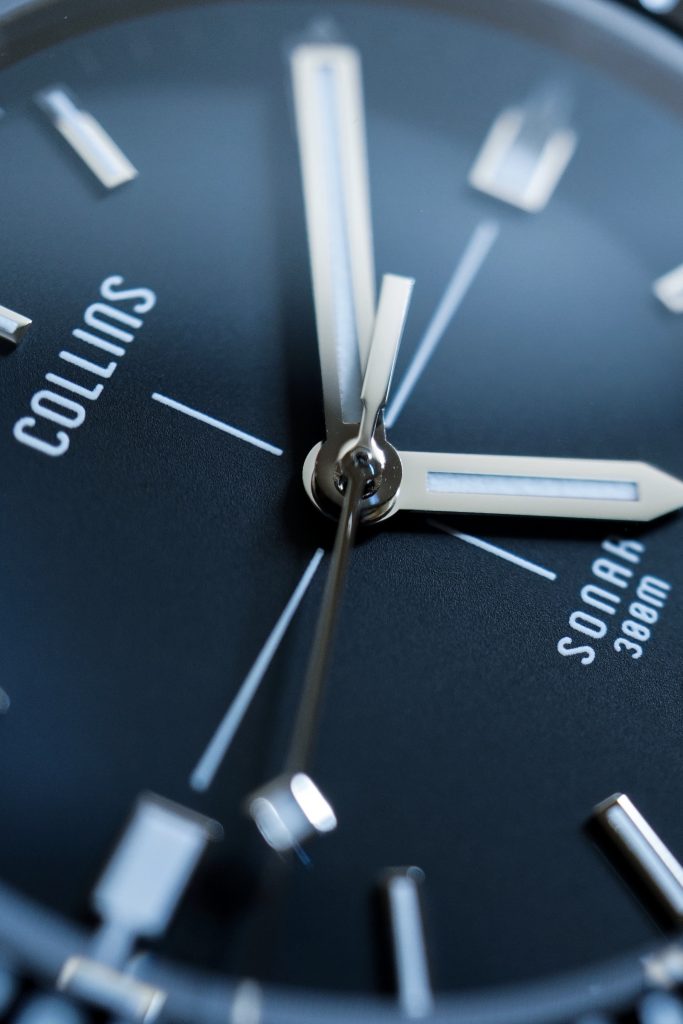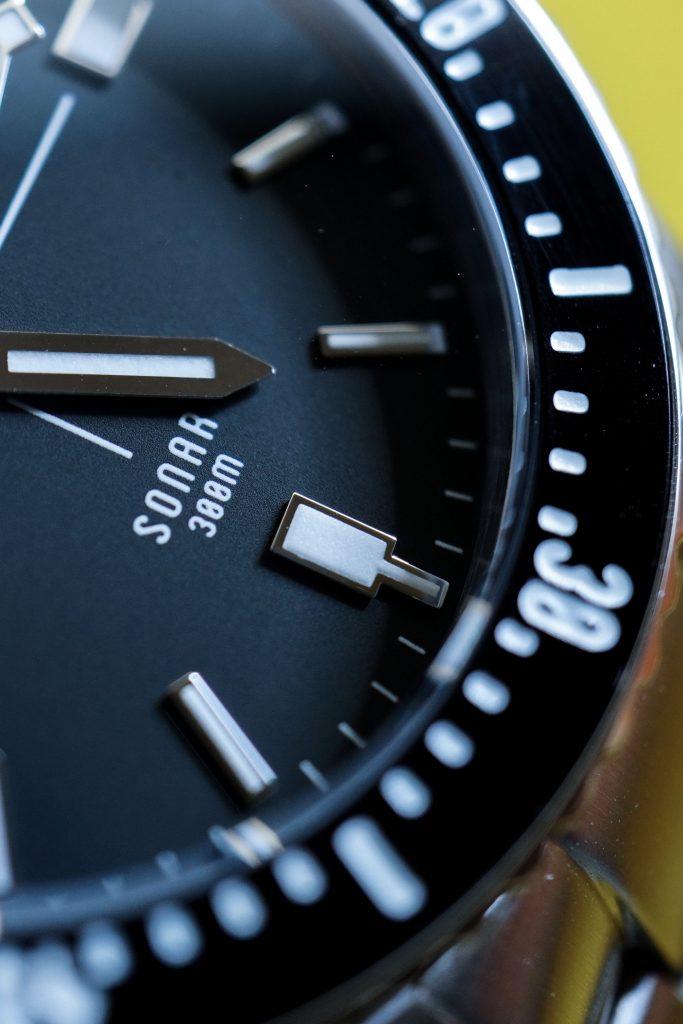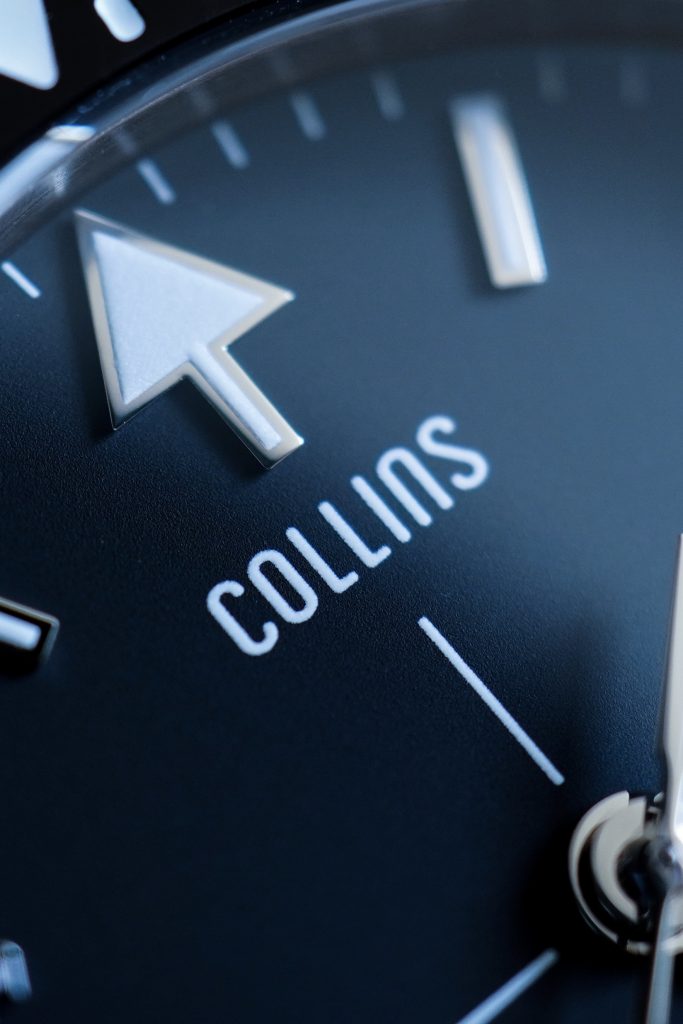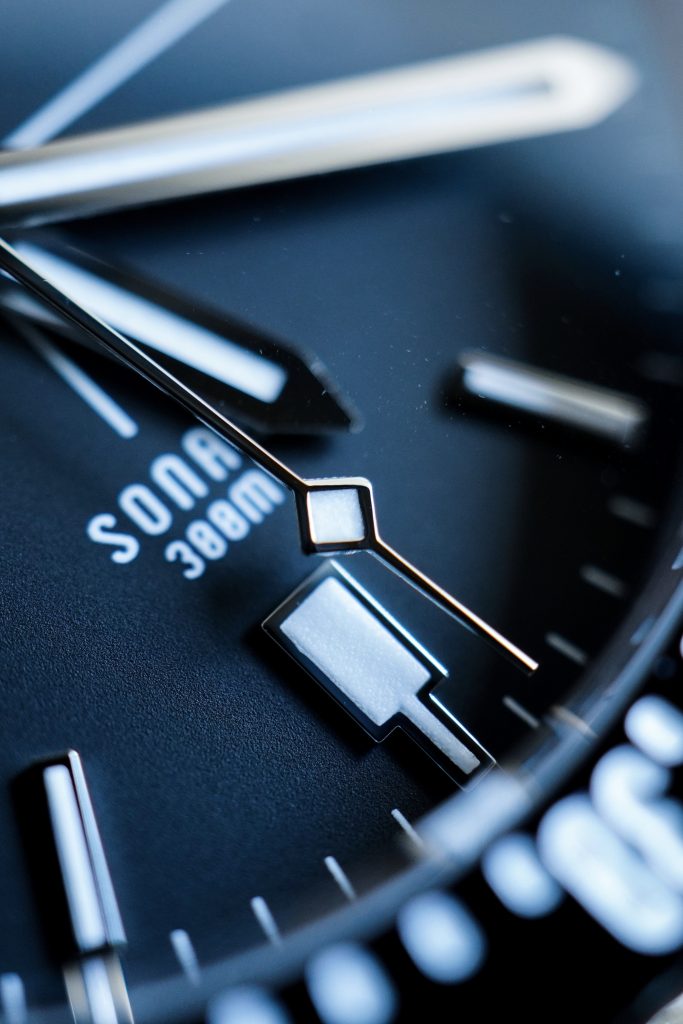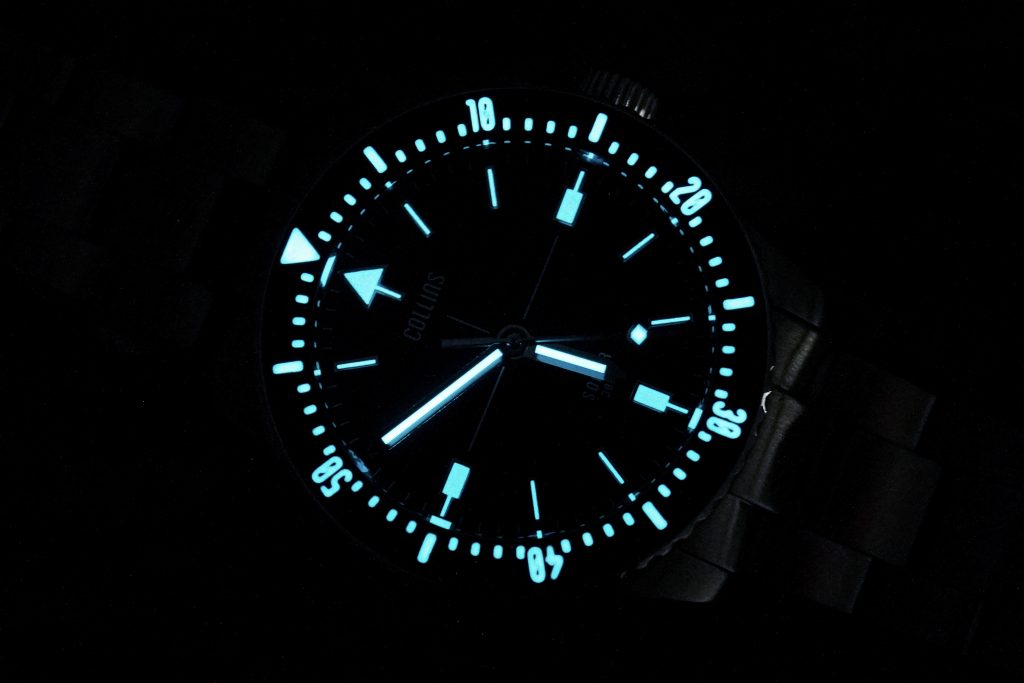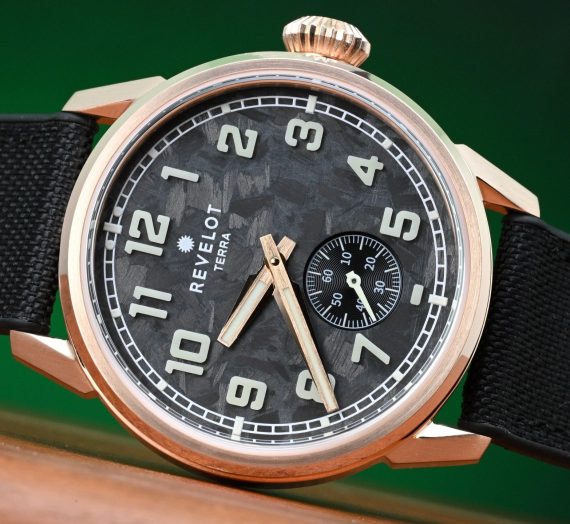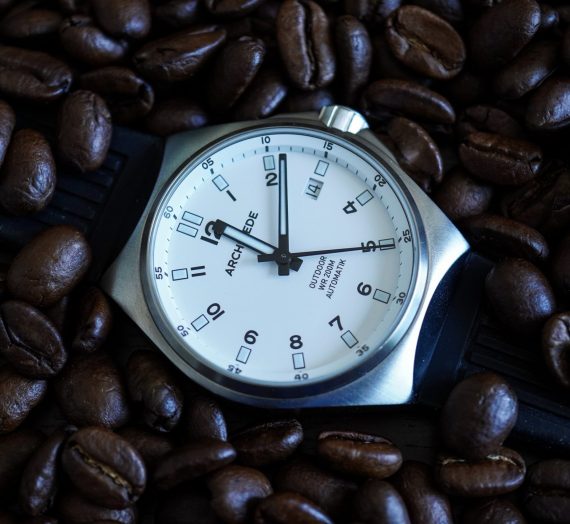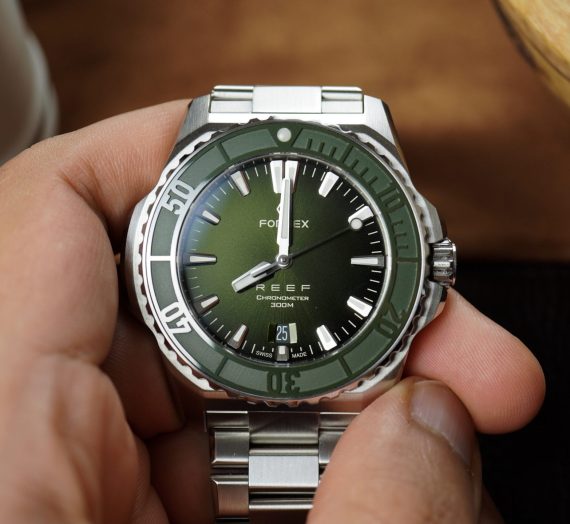Disclaimer: This watch was sent to me to review, but I was not incentivized in any way to make this review. This is in no way sponsored by Collins or any other entity. All opinions here are my own. Since this watch was worn/used by other reviewers, please make note that the experience might differ from that of a brand new watch.
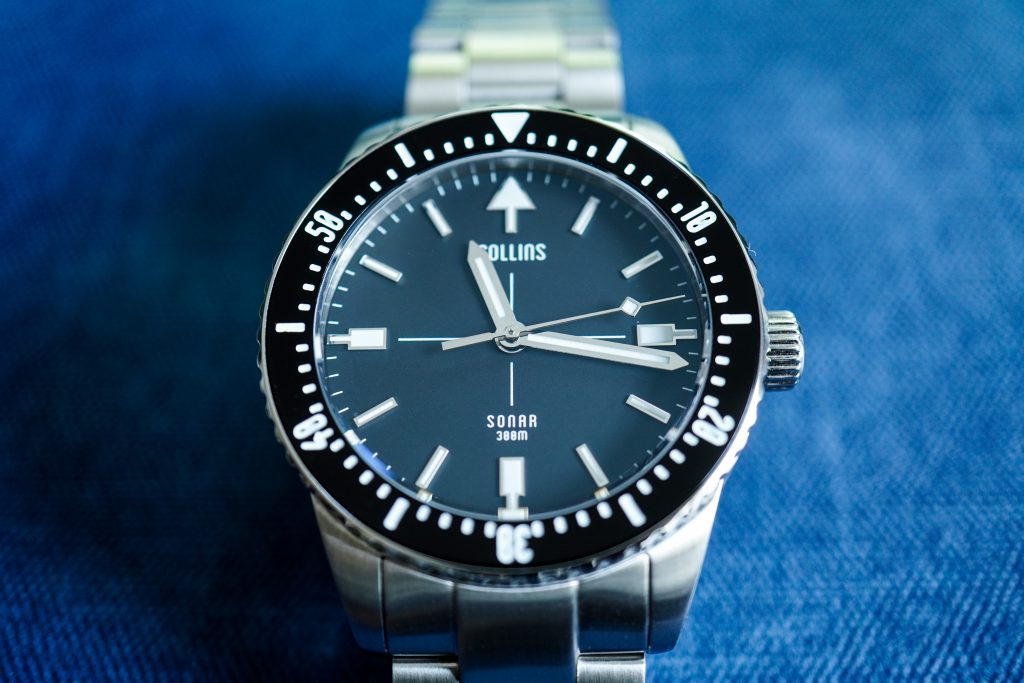
Collins
Collins is a micro-brand based in the United States and was founded by Jimmy Collins back in 2016, so it is a relatively new brand. Today I’m going to be looking at their first dive watch, the Collins Sonar. This watch retails at $695, which at first appears to be a steep price to pay for a watch that resembles a lot of other micro-brand divers on the market right now (Traska Freediver II – $400, Nodus Retrospect II – $475, etc). For this reason, I’ve decided to change up the format of this review and present it in the form of an argument for and against choosing a Sonar as your next micro-brand dive watch. I will draw parallels to the Traska Freediver that I recently reviewed, as it delivered an incredible amount of value at $375.
Case
In terms of overall case dimensions, this watch is almost identical to the Traska Freediver, with maybe +/- 0.5mm along each dimension, and comes in at 39.5mm (diameter) x 47.5mm (lug-to-lug) x 12mm (height). When compared to the Nodus Retrospect II (which I have not reviewed yet), this watch is smaller along all dimensions. The Freediver has straighter lugs, whereas the Sonar curves more towards the wrist and I like the way that translates onto the wrist. In some angles, it reminds me of the Seiko Shogun, which is one of the few Seiko watches I really like.
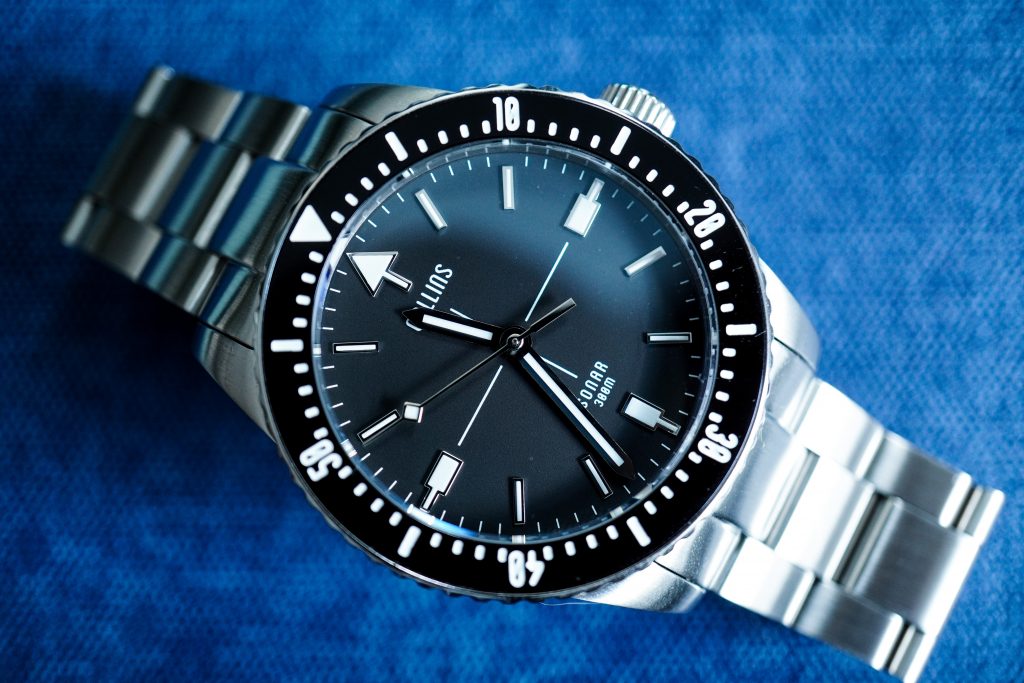
The Freediver has a surface hardened steel case and bracelet which earned a lot of points in my book. The Sonar has regular 316L brushed stainless steel case with some polished surfaces (the bezel edge and the crown). This combination lends itself well to artificial light and shimmers like your favorite high end sports diver (you know the one).
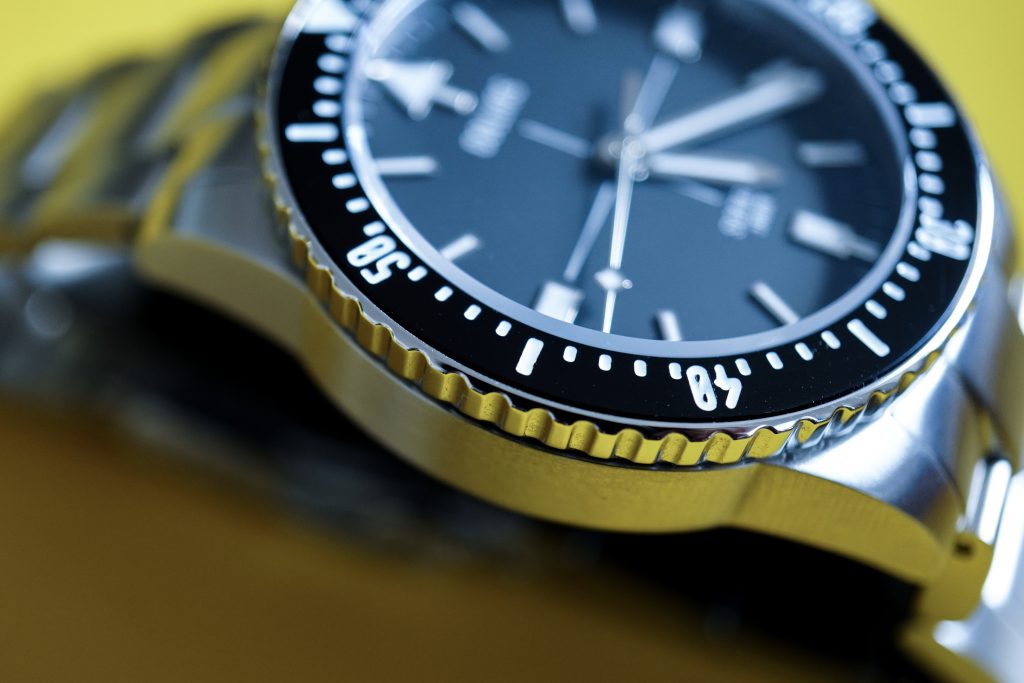
Both watches have screw down crowns and screw down case-backs but the Sonar, with the same dimensions, is rated for an impressive 300m of water resistance in comparison to the 200m on the Freediver.
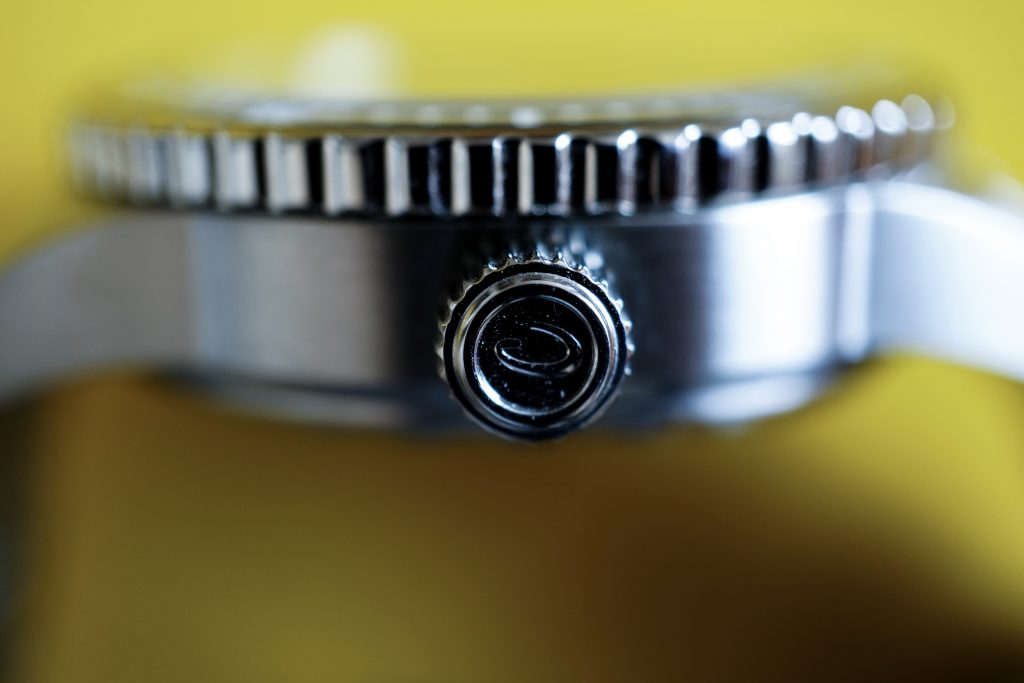
So in terms of case design, you’re looking at 300m water resistance vs surface hardened steel because the overall case quality and finishing on both watches is good, but almost identical. I think I prefer the Freediver, primarily because of the surface hardened steel.
Bezel
The 120-click ceramic bezel Sonar is excellent, has negligible back-play and feels much better than the Freediver. Every element on the bezel is filled with BGW9 Super Luminova and looks absolutely amazing in the dark. The Freediver on the other hand only has a lumed circular pip at 12 o’clock on the stainless steel version. The ceramic version of the Freediver has lumed indices but from what I’ve seen online, is nowhere as impressive as this.
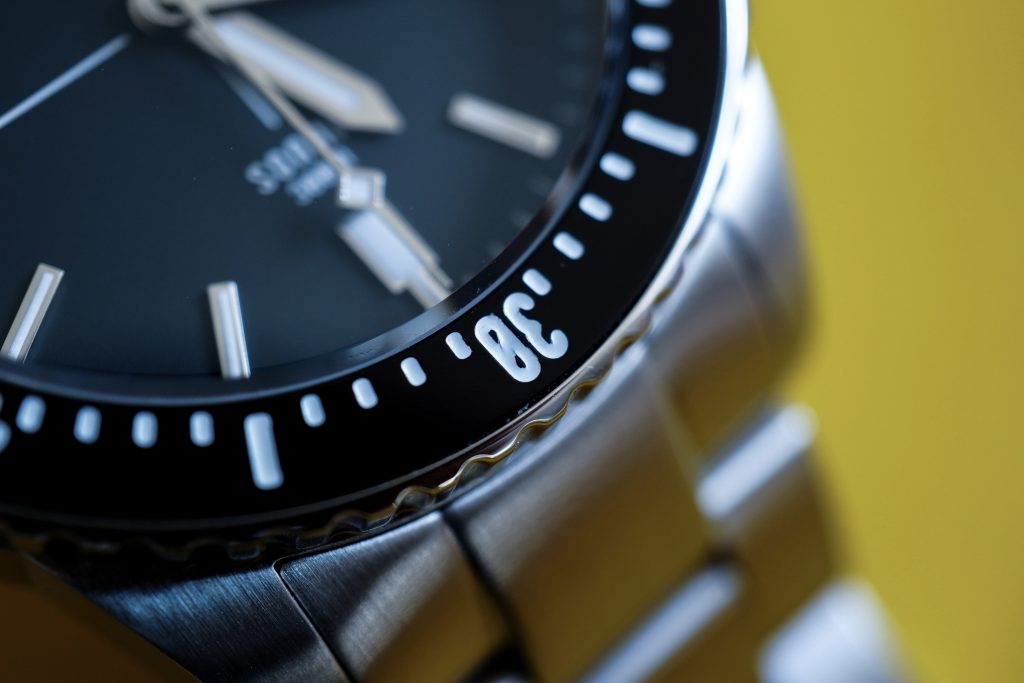
The Sonar definitely wins the bezel game with a more accurate bezel and impressive lume.
Dial
There is definitely a bias when comparing an exciting Mint dial Freediver with a more conservative Black dial Sonar, so I will try my best to be objective about this. The Sonar is available in many different colors and I particularly like the blue dial (surprise) and the green one. Unfortunately those don’t have fully lumed bezels.
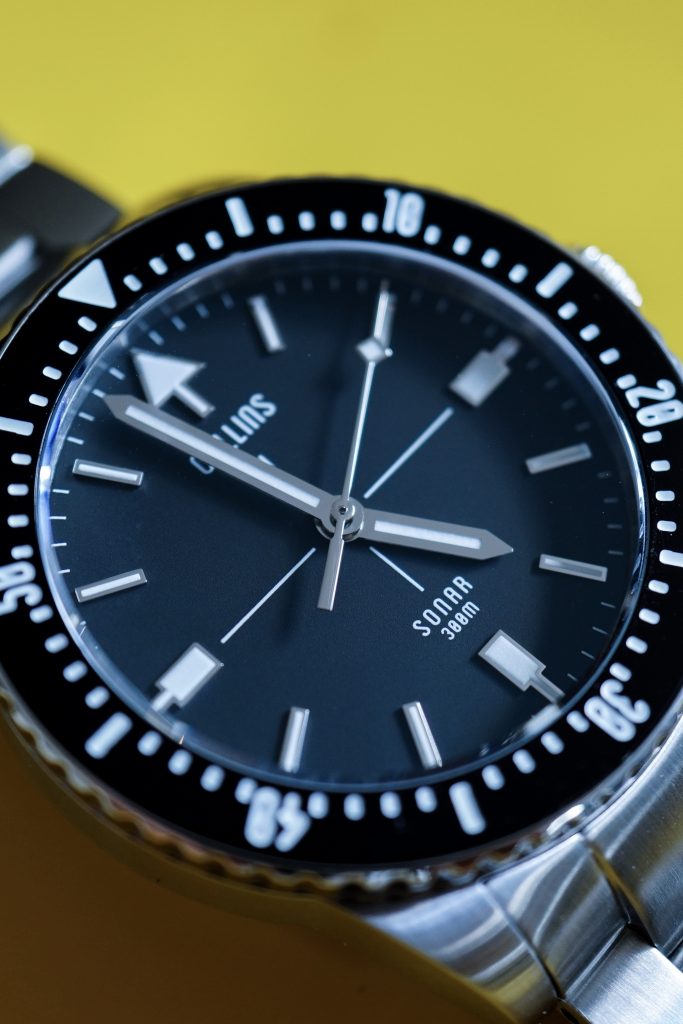
Putting aside dial colors, the Sonar absolutely wins the dial game with extremely well made hands and hour indices. The quality of finishing on the diamond cut hands and indices is on par with more expensive watches, and light years ahead of those on the Freediver. They are polished evenly with no visible jagged edges or surface anomalies. Very impressive work from Collins!
If you remember my Traska Freediver review, the lume on the hands and indices were mismatched, whereas this watch is identical and generously lumed. The seconds hand has a diamond lumed marker which earns more points and puts on a great show when lit up. The 3, 6, 9, 12 hour indices have an interesting design and give the dial some character.
The quality of components on the dial is likely what will separate the Collins Sonar from the other sub $500 dive watches. In terms of overall finishing, I did find a small particle on the underside of the flat sapphire crystal. This happens to the best of brands so I won’t hold it against them. 10 minutes with a watch technician and problem solved.
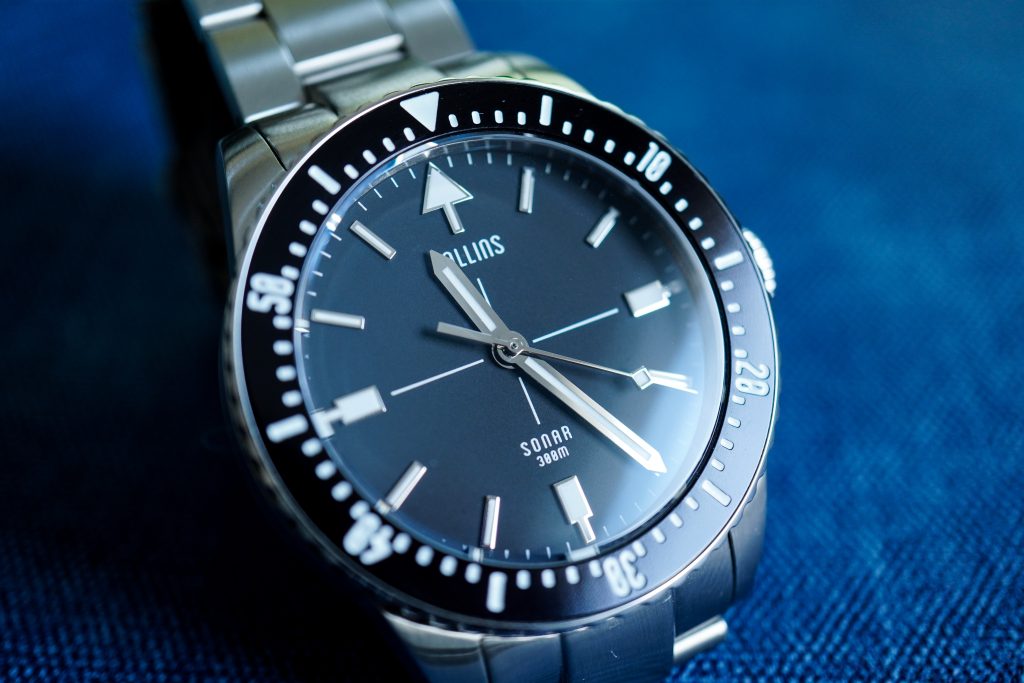
The rest of the dial is very well finished. The raised flat sapphire crystal is a great choice and results in a perfectly legible dial. Frankly, I’m tired of the domed sapphire craze right now. It’s reached a point where reading the seconds track on some watches is becoming an arduous task and the Sonar’s flat crystal delivers a clean and legible reading experience.
Lume
Between the excellent lumed bezel and the good dial lume, the Sonar is the easy winner and I will just let these pictures and my video speak for themselves.
Bracelet
While the Sonar delivers a well made pressed clasp with 3 positions of micro-adjustment and a nice stamped clasp lock, the Freediver gets the points on this one with it’s excellent milled clasp and perlage finishing.
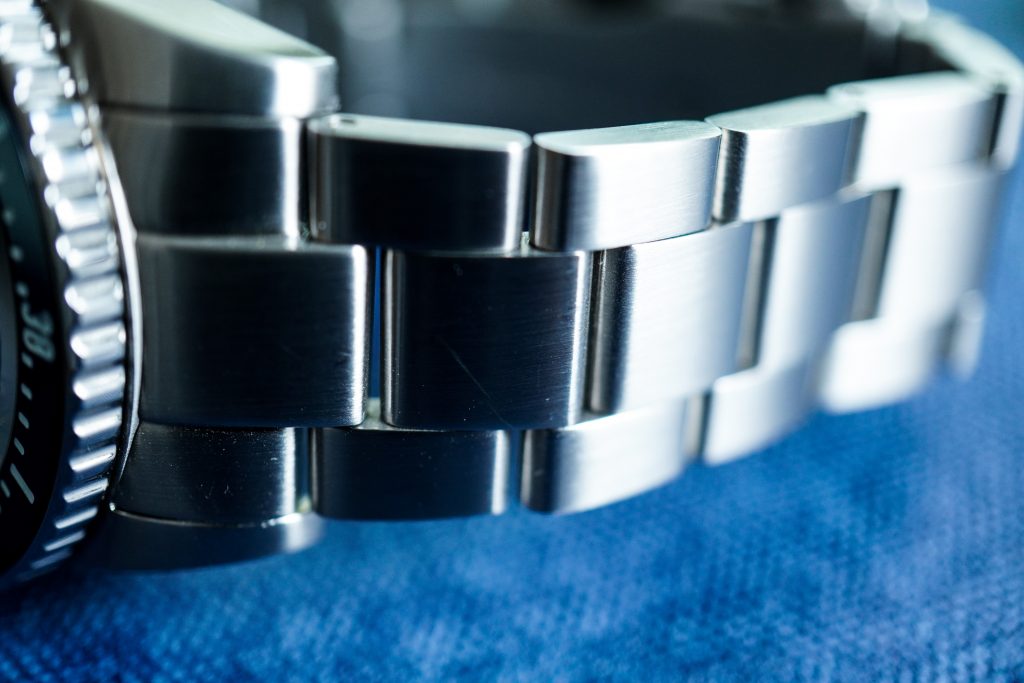
In terms of the bracelet links and finishing, I’m going to have to declare a tie. The Freediver bracelet links were of excellent quality but I kept getting hair yanked out of my wrist to the point of leaving a bald spot on my wrist. The Sonar bracelet has no hair pulling, but I’ve had some struggles with the link-pin screws, and I personally believe the actual links could’ve been made to tighter tolerances. The links are brushed to match the case and the tolerances at the case and bracelet joint are great.

Overall, the Freediver wins this round.
Movement
The Sonar ships with the Sellita SW200, which is an excellent movement and reason enough to cough up the extra dough, over the Freediver or Retrospect. For starters, I observed roughly -21 spd on the Seiko NH35 in the Freediver, whereas I’ve observed +6 spd on the Sonar after logging it’s accuracy over a 48 hour period of use. Since the SW200 has a date complication, there is a ghost date position when adjusting the crown. This could be annoying to some, but I’m willing to forgive them just as I did with the Yema Navygraf.

I also prefer the crown action and adjustment experience of the SW200 to the NH35. The NH35 often feels scratchy and cheap. The SW200 isn’t perfect, but it delivers a significantly better experience and if you wind these two movements side by side, you’ll quickly realize why the SW200 equipped Sonar costs more than the NH35 equipped Freediver.
The Sonar wins this round easily.
Concluding Thoughts
One of the biggest disappointments from the Freediver was the brand’s claim of being ‘an independent American watch brand‘ and then receiving watch ship straight from a facility in China. I’m not against Chinese made watches or Chinese components, but I don’t like incorrect or misleading marketing. I’m all for brand transparency. I understand that brands often try to ‘hide‘ the fact that their components are made in Asia in fear of losing business. But I think the majority of us watch enthusiasts are open minded, and we understand that to bring costs down, overseas manufacturing is the only option. That said, we must understand the opposite as well – if we want watch manufacturing, or even Assembly & QC to take place in the United States, this will result in higher overall prices.
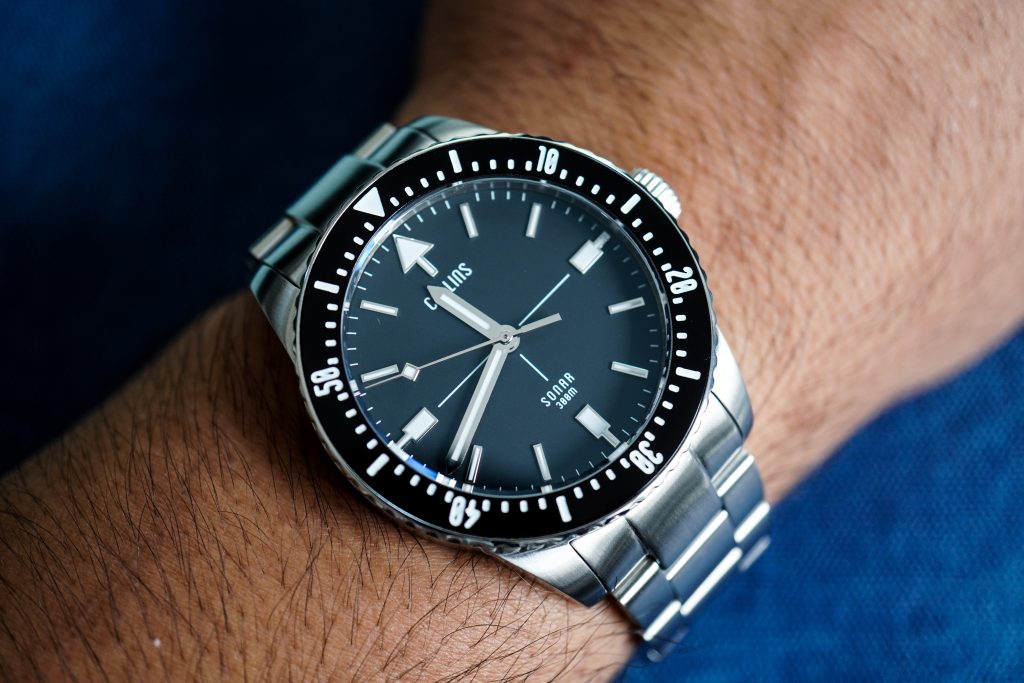
If you flip the watch over, you’ll see an interesting sonar inspired case back engraving (also looks like radar), around which is proudly mentioned ‘Assembled in the USA‘.
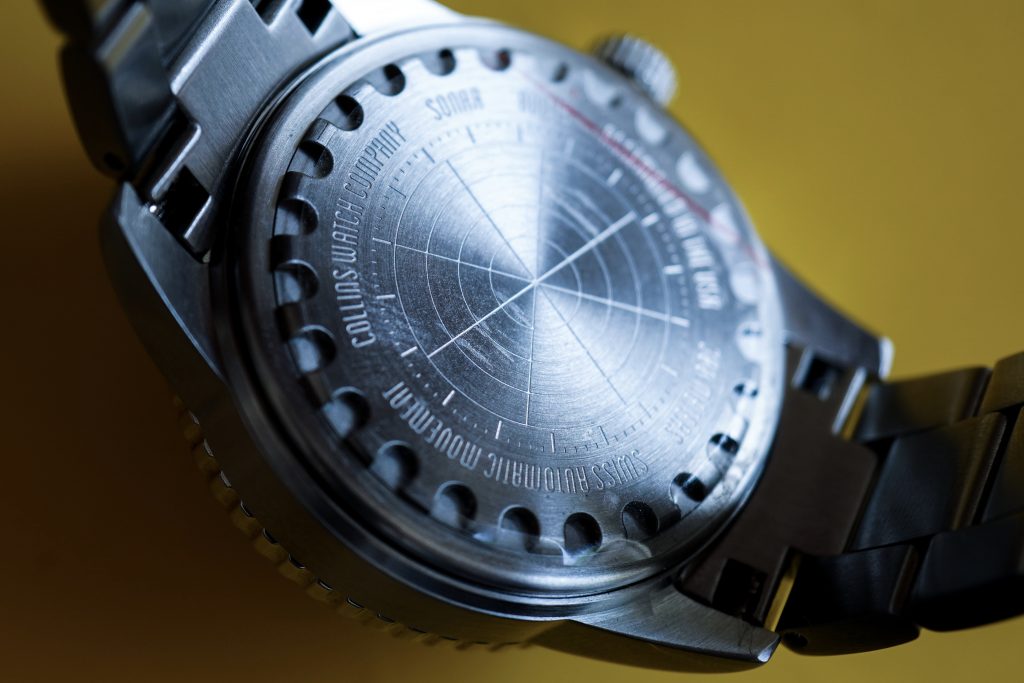
So if you start to tally things up – By choosing the Sonar ($695) over the Freediver ($400), you’re sacrificing surface hardened steel and a very good bracelet but what that additional $300 gets you is is:
- 100m more water resistance
- an exponentially better dial
- better lume
- a better bezel
- better movement
In the case of the Collins Sonar and Nodus Retrospect II, you’re also getting a watch that is assembled and QC’d in the United States (if that makes a difference to you).
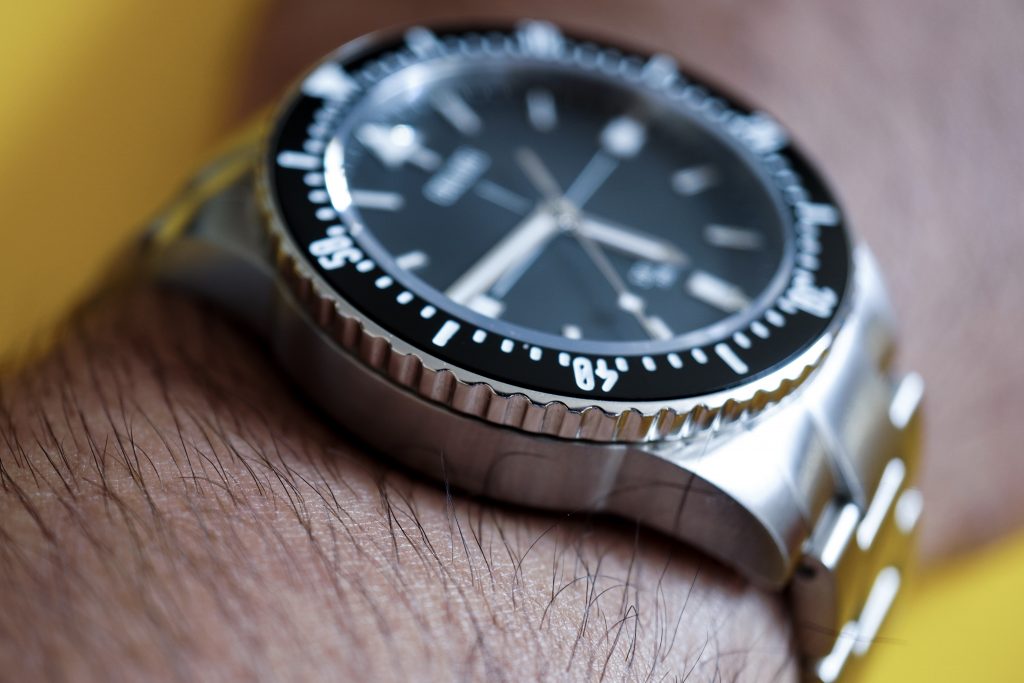
Should you buy the Collins Sonar? That depends on how important the above mentioned points are to you. The $700 price range is a difficult one to be in, given the influx of sub-$500 divers. I heard that Collins offered a 20% discount on this watch during Memorial Day, and at that price, this watch is an easy choice over the competition. At $700, some of your other options are – NTH Watches, Baltic Aquascaphe, Certina DS PH200, Helson Sharkmaster, Yema Navygraf, etc.
Thanks for reading!

